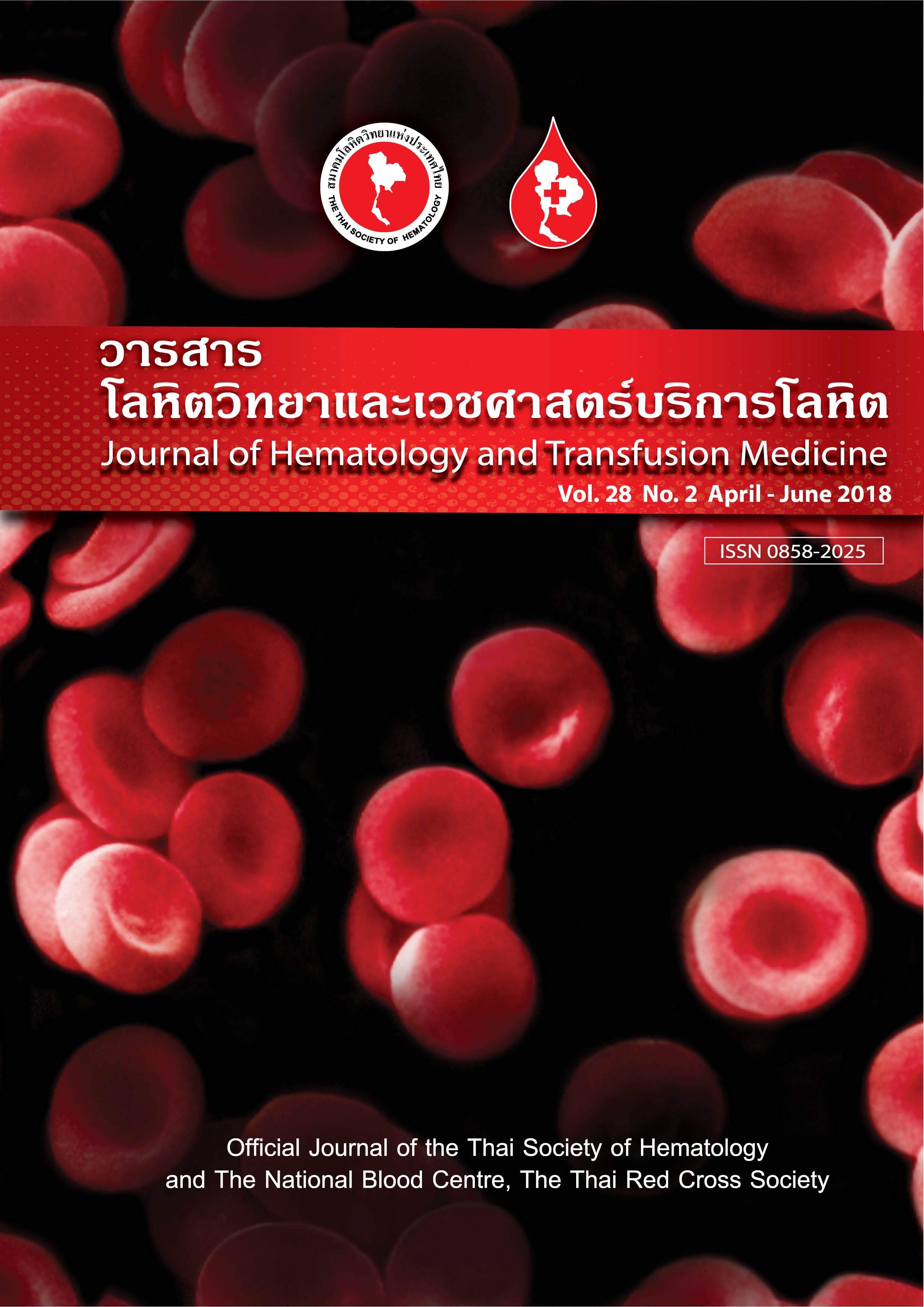Incidence of Invasive Aspergillosis in Acute Myeloid Leukemia Patients Receiving Intensive Chemotherapy at Sisaket Hospital
Keywords:
Invasive aspergillosis, Acute myeloid leukemiaAbstract
Background: Invasive aspergillosis can be found among patients with acute leukemia who have prolonged neutropenia during intensive chemotherapy, resulting in poor outcome and financial loss. The incidence of invasive aspergillosis among patients with acute myeloid leukemia (AML) varies relatively from each center. This study aimed to determine the incidence of invasive aspergillosis in Sisaket Hospital and its effect on outcome of AML treatment.
Methods: We retrospectively evaluated the incidence of invasive aspergillosis, occurring during intensive chemotherapy, as well as the effect of this infection on the achievement of complete remission (CR) and the number of deaths after induction of patients with AML.
Results: All 16 patients with AML, undergoing 17 courses of induction chemotherapy, were evaluated. The incidence of invasive aspergillosis was 41.2%, 23.5%
were classified as probable cases, and 17.7% were specified as possible cases. Invasive aspergillosis mostly occurred after the first course of chemotherapy (6 of 7 cases, 85.7%). The median time of development of invasive aspergillosis was 15 days after initiating chemotherapy. As a result of AML treatment, 58.8% of the patients could achieve complete response, 17.7% had resistant disease, and 23.5% had early death or hypoplastic death. The 2-year overall survival and 2-year relapse-free survival rates were 37% and 10%, respectively. The development of invasive aspergillosis did not show any adverse effect on the complete response rate after induction.
Conclusion: The incidence of invasive aspergillosis in Sisaket Hospital was relatively high, but did not show any adverse effect on AML treatment outcome.



